Gut-soothing herbs and home concoctions to add to your diet
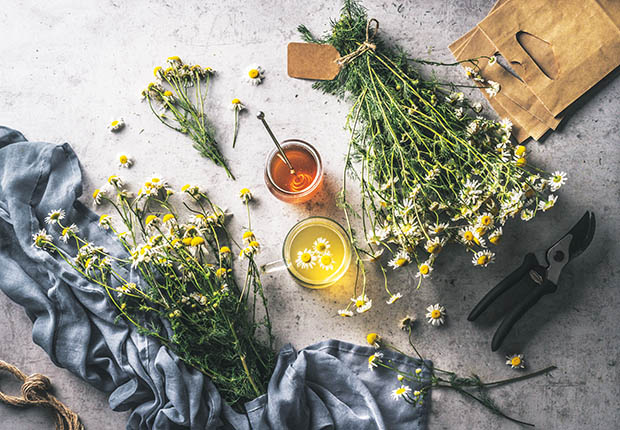
Bloating, belching, heartburn, diarrhoea or constipation getting you down? Use these soothing herbs and plants to provide some relief.
Words: Jane Wrigglesworth
Your gastrointestinal tract has a mighty job: it crushes and grinds food, secretes enzymes and acids for digestion, absorbs water and nutrients, balances fluids and electrolytes and excretes waste. It’s a vast, complicated system that actually extends from the mouth all the way to the anus. So if something isn’t working properly, you’ll definitely know. But don’t take gut discomfort as your lot in life; many herbs can aid in the healthy functioning of the GI tract.
BITTERS
Digestive bitters are a great way to aid digestion and mitigate gut issues. They’re made of herbs classed as cholagogues, which stimulate the contraction of the gallbladder to increase bile flow. Produced in the liver and stored in the gallbladder, bile is essential for the digestion of fats, allowing them to be absorbed into our bodies. It’s also essential for the absorption of iron, calcium and fat-soluble vitamins, and the removal of certain waste products.
Bitters work through direct contact with the bitter taste receptors on our tongue, which prompts the secretion of saliva and jumpstarts the digestive process.
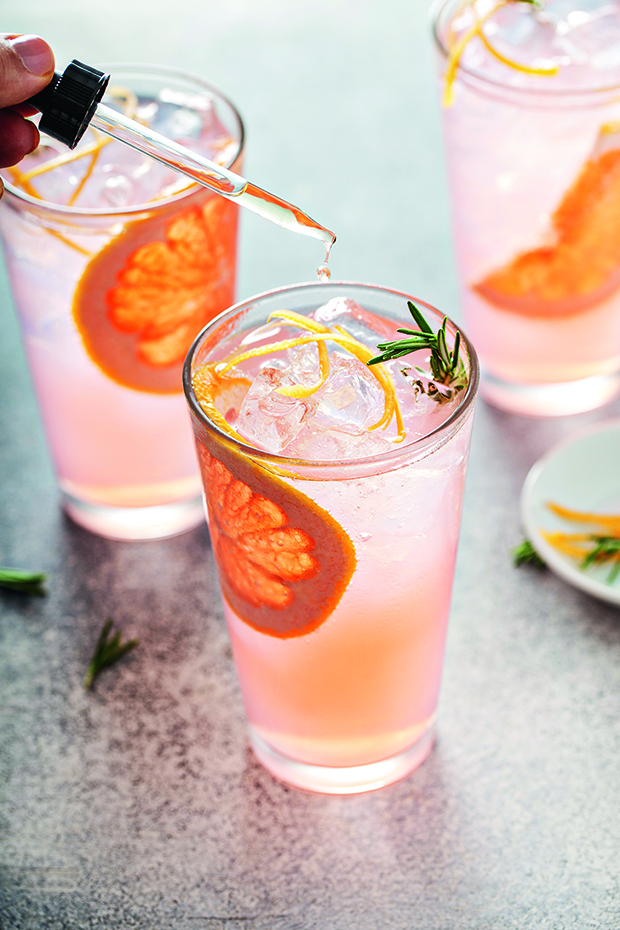
While bitter herbs are commonly used in natural medicine, you’ll also find them in a range or alcoholic beverages – mostly aperitifs and digestifs. Aperitifs are before-dinner drinks that prepare the stomach for food. Campari, that iconic red-coloured Italian aperitif, contains a selection of aromatic and bitter herbs, among them gentian and ginseng – one of the top bitters used to aid digestion. Vermouth’s main flavouring agent is wormwood – a bitter herb that’s also an ingredient in absinthe. Salers is a French aperitif which contains gentian root, and angostura is a concentrated drink made up of bitter herbs and spices. Hops and chamomile are bitters too.
Then there are digestifs, which are consumed post-dinner. In Spain, it’s not uncommon to be given a “chupito”, a shot of liqueur (in particular an “orujo de hierbas”, or herbal liqueur) after settling your restaurant bill. It’s both a thank you and a “here’s to good health” gesture that contains a selection of herbs to dispel uncomfortable gut issues. Jagermeister is a German digestif with around 60 herbs and spices such as cinnamon bark, cloves, ginger root, coriander, ginseng, lavender and gentian.
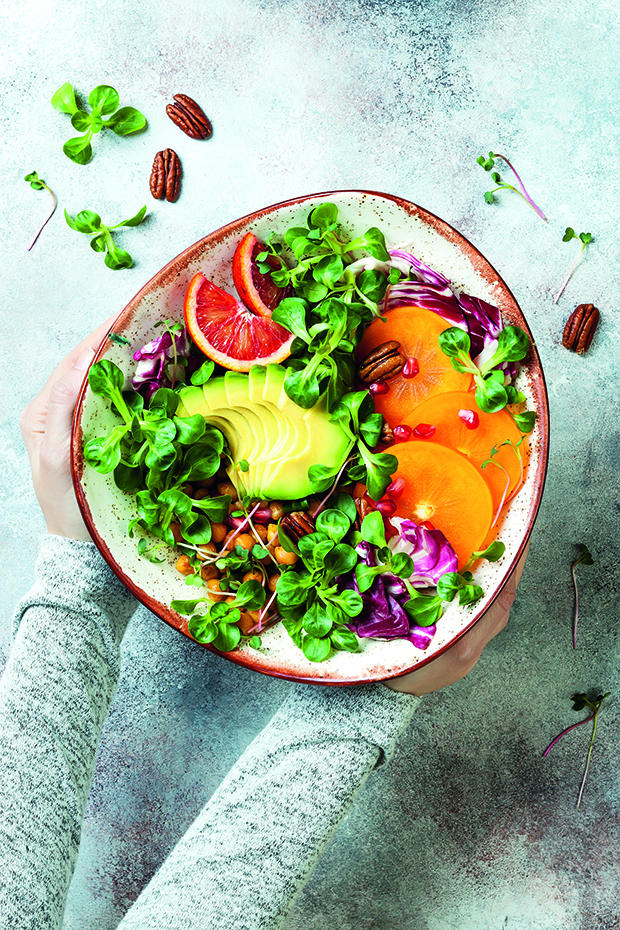
Many bitter herbs can be grown in the home garden or foraged, which means you can make your own digestion-supporting drinks or meals without the alcohol if you prefer. Some of the easiest to grow or forage on the lifestyle block include:
• Dandelion (Taraxacum officinale). Commonly found in pastures and lawns, dandelion is a highly nutritious plant full of flavonoids, phenolic acids, vitamins and minerals. Both the leaves and the root are beneficial but it’s the root that primarily supports liver function and stimulates digestive secretions. Harvest the root in autumn from plants over two years old. You can eat them fresh, or dry them for use in teas and drinks by baking in a warm oven at around 100°C for four hours. You’ll still want to use the leaves as they’re amazing for supporting fluid retention in the body. Add them fresh to salads.
• Chicory (Cichorium intybus). Belonging to the Asteraceae family – the same as dandelion – chicory is another nutritious and versatile bitter herb with edible leaves, roots and buds. It’s common along roadsides
and in pasture, and the whole plant is a popular summer feed option for stock. Like dandelion, chicory leaves can be added fresh to salads, or the root can be gently baked/dried for later use as a coffee substitute.
• Anise or aniseed (Pimpinella anisum). The digestive benefits of anise come from the dried, liquorice-tasting fruit (what we might think of as the seeds). The plant itself is an annual of the parsley family, Apiaceae. It likes well-drained, fertile soil with full sun. Sow seeds in spring for the plant to flower midsummer. Collect the seeds when the flower head is brown. Snip the stems below the flower heads and hang upside down until the seeds are dry. Shake the seeds out and store in an airtight container. You can make a soothing tea to relieve bloating by steeping the seeds in boiling water for 10-15 minutes.
PREBIOTICS
Prebiotics are fermentable plant fibres that pass through the small intestine and ferment in the large intestine. Here, they provide food for good bacteria that helps soothe the gut and support our overall health.
While there are many different plants that contain prebiotics, a simple option is to eat fruits and vegetables that contain pectin: a natural, soluble, plant fibre. The highest levels of pectin are found in citrus peels – especially grapefruits, oranges and lemons – and apples, peaches and carrots.
Citrus peel can be dried and used in herbal teas or tinctures, added to salads or casseroles, powdered and sprinkled over poultry dishes and desserts. Other foods that contain prebiotics include:
• Garlic. Contains high levels of inulin – a starchy substance that acts as a prebiotic by promoting the growth of beneficial bifidobacteria, and preventing the growth of bad bacteria in the gut.
• Onions. Onions both raw and cooked are high in inulin and fructooligosaccharides (FOS), a type of carbohydrate which strengthens gut flora, and helps with fat breakdown.
• Jerusalem artichokes. These contain high levels of inulin-rich dietary fibre, providing about two grams per 100 grams.
• Slippery elm (Ulmus fulva). The inner bark of slippery elm contains mucilage which coats the digestive tract. While it’s native to North America and doesn’t grow in New Zealand, it’s widely available to purchase as a dietary supplement.
GUT SOOTHERS
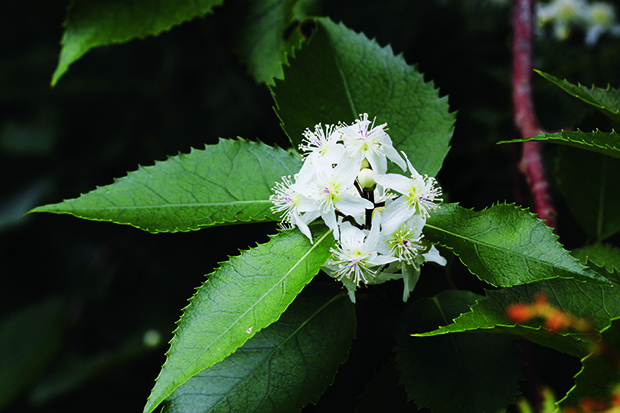
For common symptoms such as bloating and gas, there are a range of different plants that can easily be sourced or grown locally. These include fennel, dill or ginger all of which can be steeped in hot water to make a soothing tea. For those living near a bush, however, a wonderful option is the native plant houhere, aka lacebark or ribbonwood (Hoheria populnea). As a member of the mallow family – the same family as slippery elm – houhere is rich in mucilaginous polysaccharides, which makes it excellent for digestive upsets and inflammation. While the leaves, flowers and bark were all used in traditional Rongoā Māori medicine, mostly it was the bark that was used, steeped in either hot or cold water.
HOME CONCOCTIONS
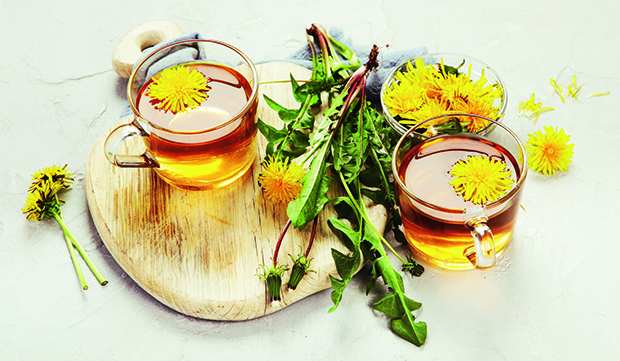
Keeping your own bitters or digestive aids on hand can be a life saver – or rather, at the very least, a tummy soother.
After-dinner tea
I’m a huge fan of chamomile (Matricaria recutita). As well as being a mild sedative, it’s anti-inflammatory, and a carminative (relieves flatulence). It’s particularly effective for addressing stress-induced bloating. At one of my herb talks, a lady of Mexican descent told me her family consumed chamomile tea after every meal to aid digestion – a Mexican tradition.
This recipe will help ameliorate bloating and aid digestion. If you don’t like spearmint, substitute with lemon balm or anise. Avoid spearmint, and other mint leaves, if you suffer from reflux, as it can make it worse.
INGREDIENTS
1 tsp dried chamomile flowers
½ tsp dried spearmint leaves
½ tsp dried caraway or fennel seeds
METHOD
Place ingredients into a tea infuser and add to a cup. Fill with freshly boiled water and steep for 10-15 minutes before drinking.
Digestive bitters tincture
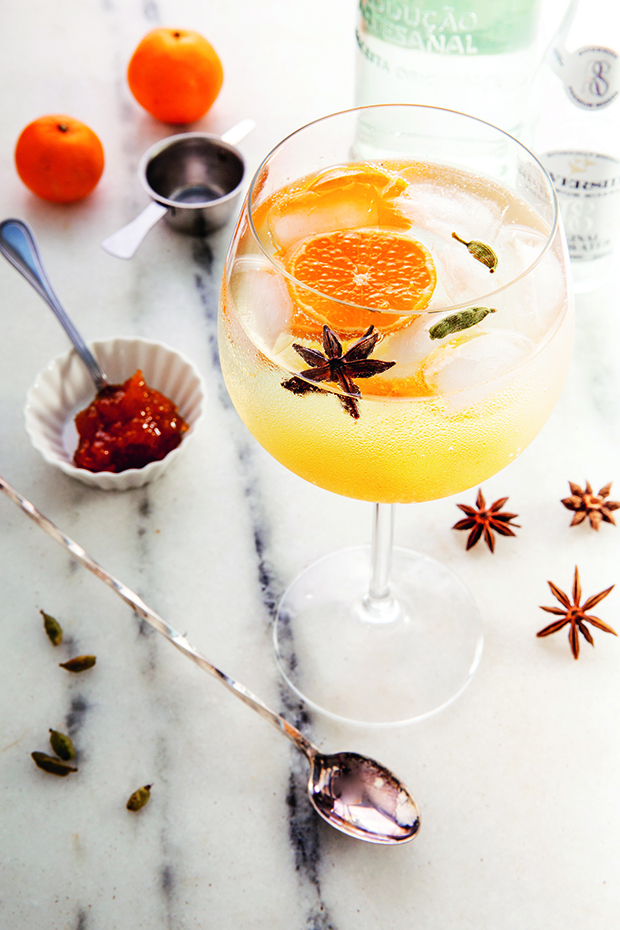
Add a few drops of the tincture directly to your tongue 20-30 minutes before your meal. Alternatively, add a teaspoon to pre-dinner cocktails or orange juice.
INGREDIENTS
3 organic oranges
2 tbsp dried gentian root
2 tbsp dried aniseed fruit
1 tbsp dried cardamom pods
500ml vodka
METHOD
Peel the oranges with a vegetable peeler. Dry the peel in a dehydrator or in your oven for three hours at a low setting.
Roughly chop the dried orange peel and herbs and place in a glass jar.
Add the vodka and seal the jar. Place the jar in a warm room out of direct sunlight for four to six weeks. Turn the jar over once a day to agitate the ingredients and aid infusion.
After several weeks, strain the liquid and pour into another clean jar, or several dropper bottles.
Love this story? Subscribe now!
 This article first appeared in NZ Lifestyle Block Magazine.
This article first appeared in NZ Lifestyle Block Magazine.
